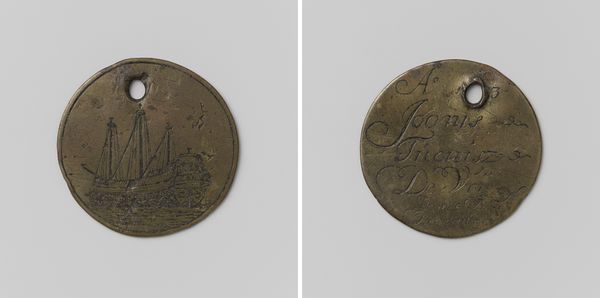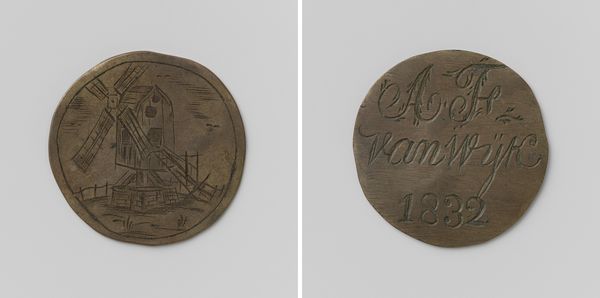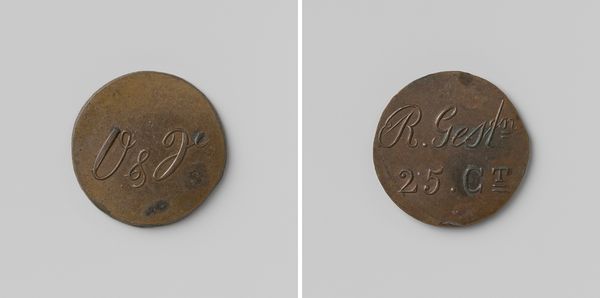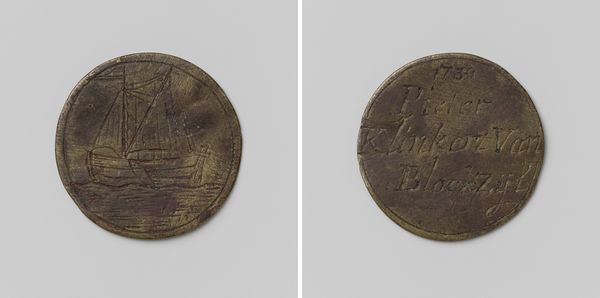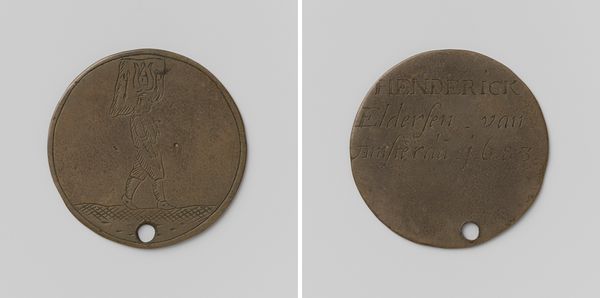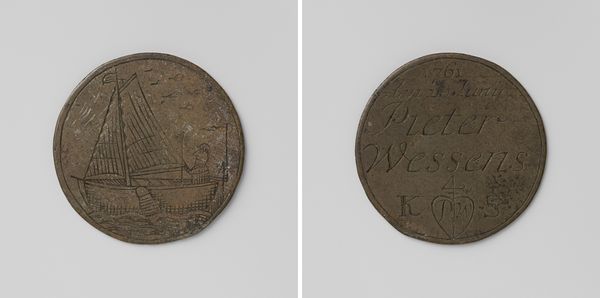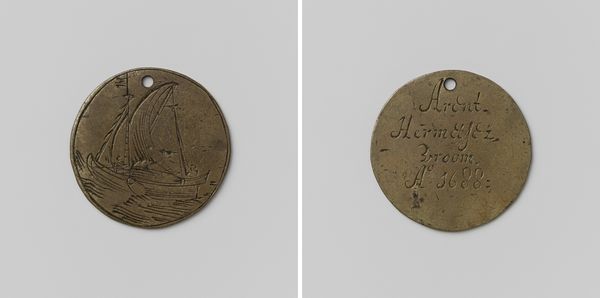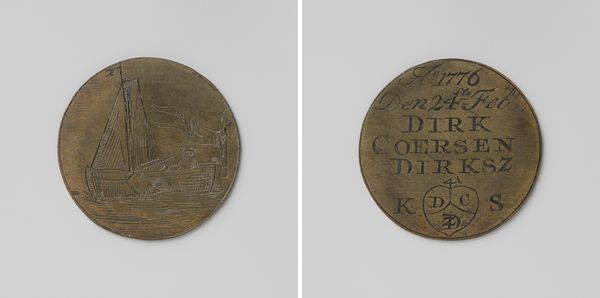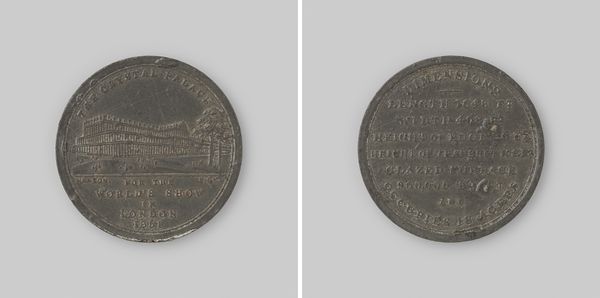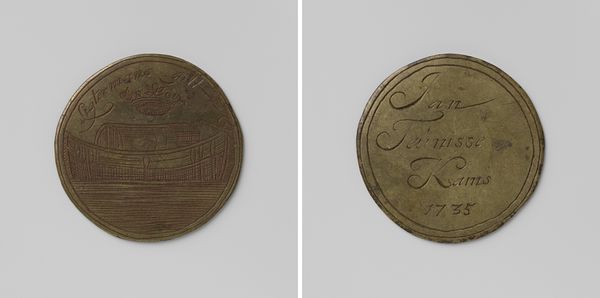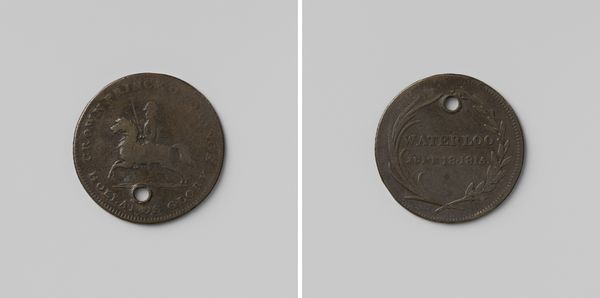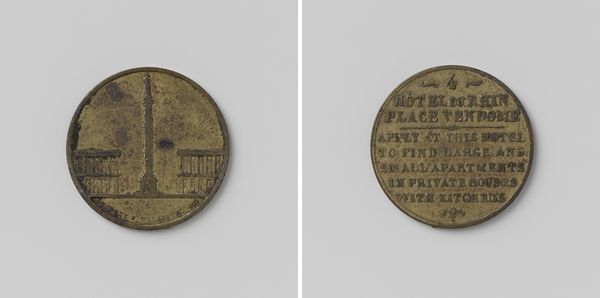
print, metal, engraving
#
dutch-golden-age
# print
#
metal
#
old engraving style
#
landscape
#
genre-painting
#
engraving
Dimensions: diameter 3 cm, weight 7.47 gr
Copyright: Rijks Museum: Open Domain
Editor: So, this is the Korenmolenaarsgilde van Amsterdam gildepenning van Wm. Voogelezang, dated 1829. It appears to be an engraving on metal. It's fascinating how something so small could represent such a large social structure. What’s your take on this? Curator: As a materialist, I find it incredibly compelling. It's more than just an image; it's an object embedded within a very specific economic system. Consider the material: the metal itself. Where did it come from? Who mined it? What was the labor involved in creating the engraving? It represents a convergence of resources and skills. Editor: That makes me think about how the guild system functioned at the time. It was all about controlling resources and skills wasn’t it? Curator: Exactly! This medallion served as both a symbol of belonging and potentially as a means of regulating the milling trade within Amsterdam. It points towards specific knowledge and skill but also restricts access for the uninitiated and unregulated. Editor: So, this wasn't just decorative, but deeply functional? Almost a primitive form of quality control and branding combined? Curator: Precisely. And consider the design – a windmill, a crucial technology. The medallion thus becomes a powerful representation of production, consumption, and social hierarchy within 19th-century Amsterdam. The engraving isn’t just an image; it’s a claim staked within a material and economic landscape. Editor: It’s amazing how much can be gleaned from considering something beyond its surface appeal. Thanks for opening my eyes! Curator: Indeed! The true richness lies in understanding art as embedded in material processes and social conditions. There is still so much more to discover about the origins and process through continued research.
Comments
No comments
Be the first to comment and join the conversation on the ultimate creative platform.
